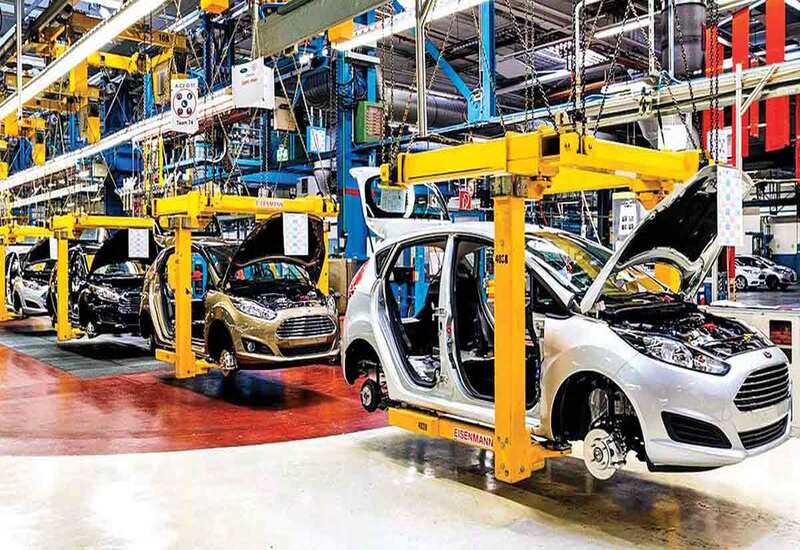The automobile industry in the United States is a significant contributor to the country's economy and a major player in the global automotive market. With a rich history and a strong manufacturing base, the industry has shaped the American economy, job market, and transportation landscape. In this article, we will explore the key aspects of the automobile industry in the USA, including its history, major players, manufacturing prowess, and future trends.
- Historical Overview:
The roots of the American automobile industry can be traced back to the late 19th century when pioneers like Henry Ford and Ransom Olds introduced mass production techniques, making automobiles more affordable and accessible to the general public. Ford's introduction of the assembly line in the early 20th century revolutionized manufacturing processes and propelled the industry's growth.
- Major Players:
The United States is home to several major automobile manufacturers, known as the “Big Three.” These companies have a long-standing presence and global reach:
a) General Motors (GM): Founded in 1908, General Motors is one of the largest automobile manufacturers globally, producing popular brands such as Chevrolet, Buick, GMC, and Cadillac.
b) Ford Motor Company: Established in 1903, Ford is renowned for its Ford-branded vehicles, including the iconic Ford Mustang and Ford F-150 pickup truck.
c) Stellantis: Stellantis, formed by the merger of Fiat Chrysler Automobiles (FCA) and Groupe PSA, encompasses brands such as Jeep, Ram, Chrysler, Dodge, and others.
Apart from the “Big Three,” several foreign automakers have manufacturing operations in the USA, including Toyota, Honda, Nissan, BMW, and Mercedes-Benz.
- Manufacturing Strength:
The United States has a robust automotive manufacturing sector, contributing significantly to the country's economy. The industry encompasses vehicle assembly plants, component manufacturing, and a vast network of suppliers. Key manufacturing hubs include Michigan (known as the “Motor City” or “Detroit”), Ohio, Indiana, Kentucky, and Tennessee. These states have a long history of automotive manufacturing and continue to be major centers for production.
- Employment and Economic Impact:
The automobile industry is a major employer in the United States, providing jobs for millions of Americans directly and indirectly. In addition to manufacturing jobs, the industry supports various sectors, including research and development, engineering, marketing, sales, and aftermarket services. The economic impact extends beyond the industry itself, as it generates demand for raw materials, technology, and services from numerous other sectors.
- Technological Advancements:
The automobile industry in the USA is at the forefront of technological advancements and innovation. Automakers are investing heavily in research and development to drive advancements in electric vehicles (EVs), autonomous driving, connectivity, and alternative fuel technologies. Companies like Tesla, a pioneer in electric vehicles, have contributed to the growth and acceptance of EVs in the American market.
- Government Regulations and Policies:
Government regulations play a significant role in shaping the automobile industry in the USA. Regulations related to safety standards, emissions, fuel efficiency, and consumer protection have a direct impact on automakers' operations and product offerings. Government incentives and subsidies for clean and electric vehicles also influence consumer demand and industry trends.
- Future Trends and Challenges:
The automobile industry is experiencing transformative changes driven by emerging technologies and evolving consumer preferences. Some key trends and challenges include:
a) Electric Mobility: The shift towards electric vehicles is gaining momentum, driven by environmental concerns and advancements in battery technology. Automakers are investing in EVs to meet emission targets and cater to consumer demand for cleaner transportation options.
b) Autonomous Driving: Self-driving vehicles present opportunities for improved safety and enhanced mobility. Automakers, tech companies, and regulators are collaborating to develop autonomous driving technology while addressing legal, ethical, and infrastructure challenges.
c) Mobility Services: The rise of shared mobility and ride-hailing services has led automakers to explore new business models and partnerships to adapt to changing consumer behaviors.
d) Supply Chain Resilience: The COVID-19 pandemic highlighted the importance of supply chain resilience and agility. Automakers are reassessing their supply chain strategies to mitigate risks and ensure uninterrupted production.
Conclusion:
The automobile industry in the United States holds a prominent position globally, with a rich history, major manufacturing capabilities, and technological prowess. American automakers and their global counterparts continue to innovate, adapt to changing market dynamics, and invest in sustainable and connected mobility solutions. With a focus on electric vehicles, autonomous driving, and evolving consumer preferences, the industry is poised for a transformative future, shaping the way Americans travel and defining the next era of transportation.



